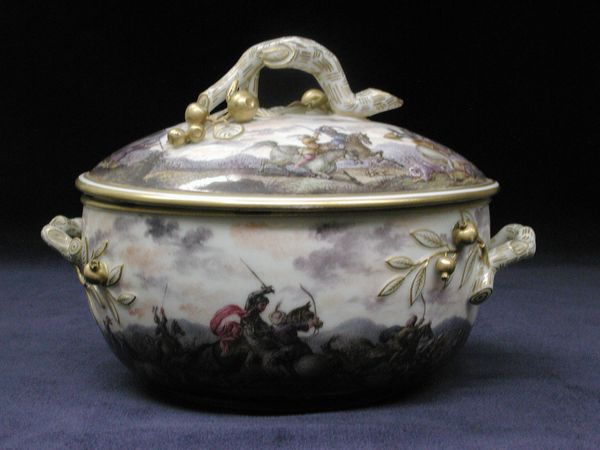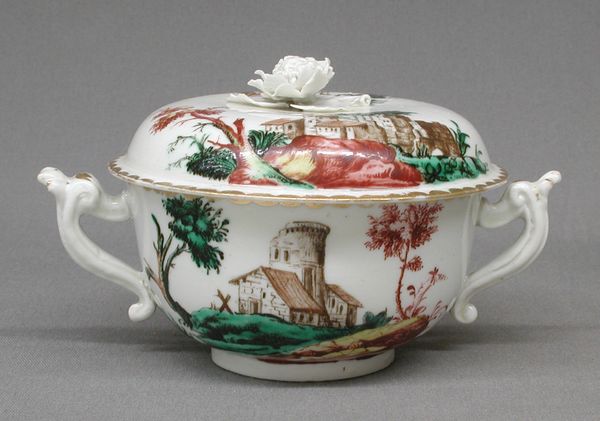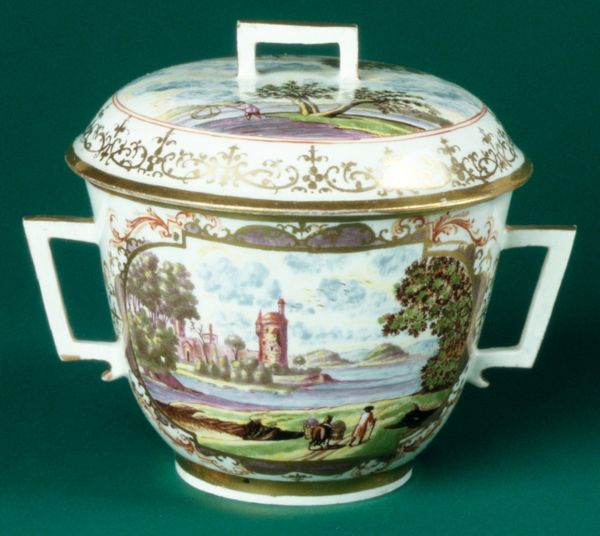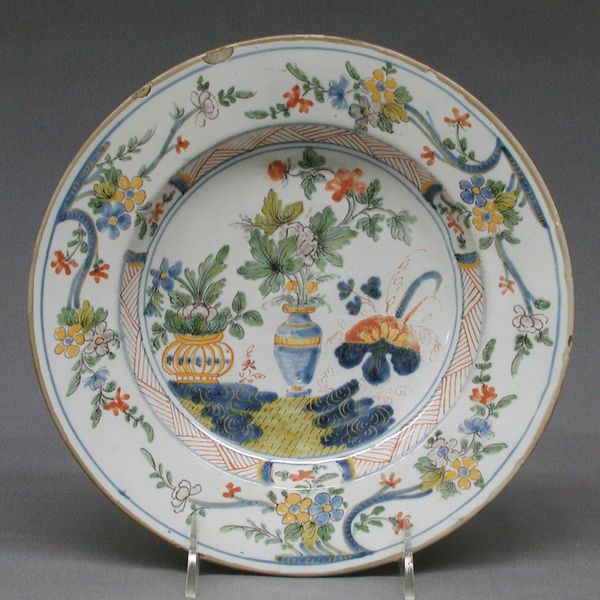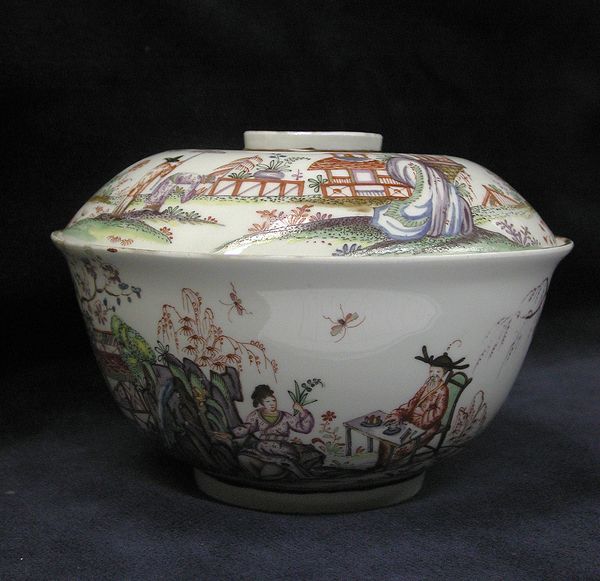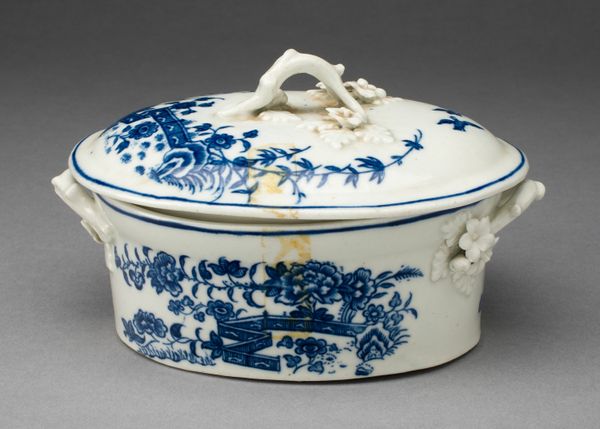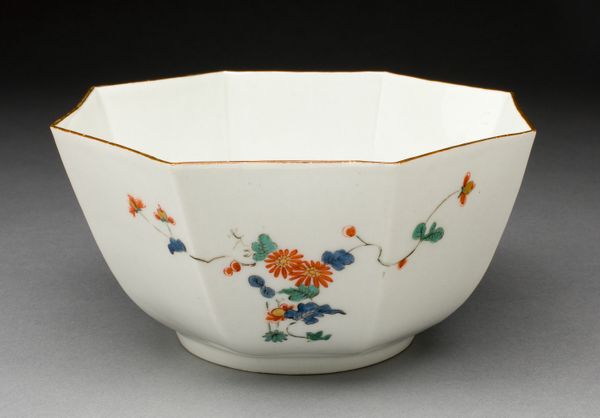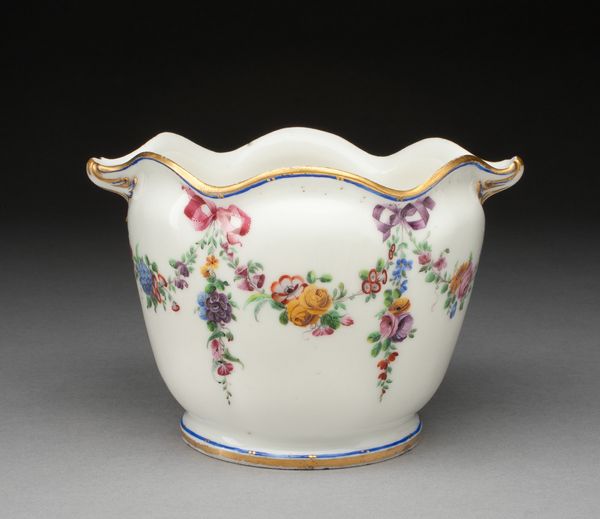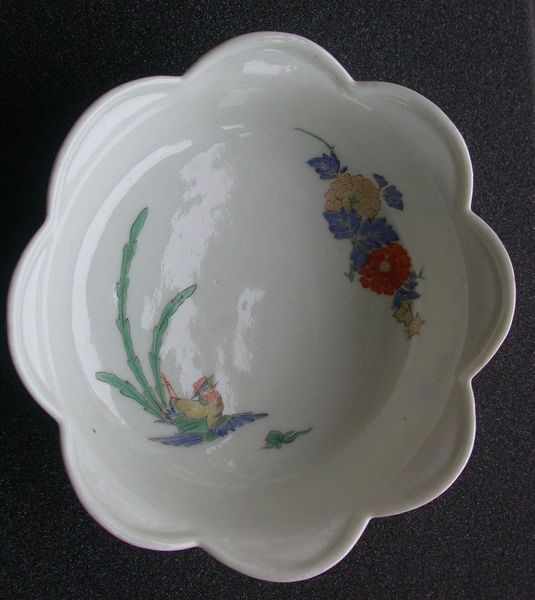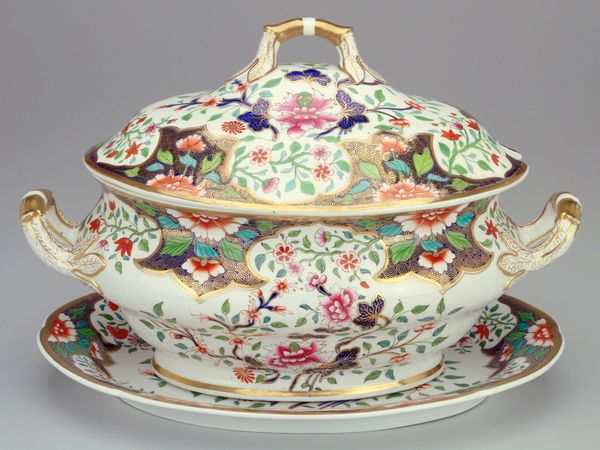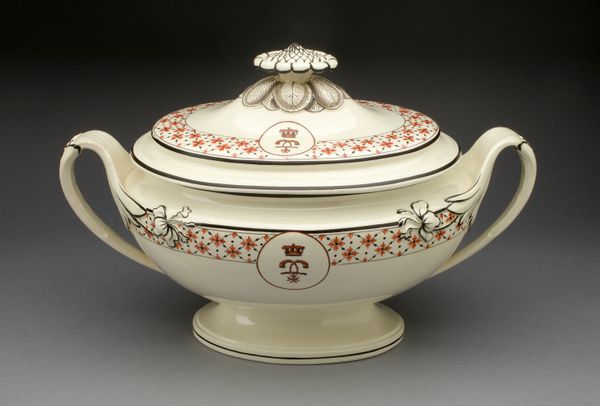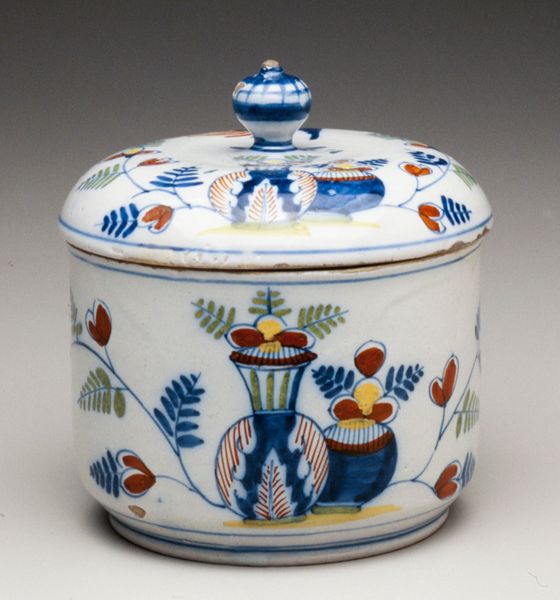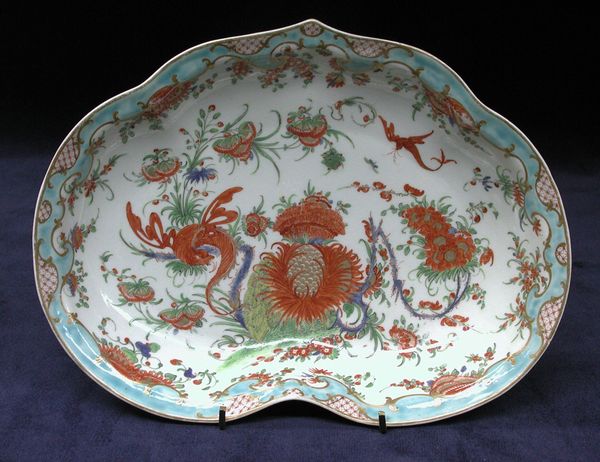
ceramic, porcelain
#
ceramic
#
bird
#
flower
#
porcelain
#
ceramic
#
decorative-art
Dimensions: 4 × 8 3/8 in. (10.2 × 21.3 cm)
Copyright: Public Domain
Editor: Here we have a lidded bowl crafted by the Meissen Manufactory between 1729 and 1739. It’s porcelain, of course, decorated with birds and flowers. I find the elaborate gold handles and finial so striking against the white porcelain. How do you interpret the symbolism at play here? Curator: This bowl encapsulates a fascination with the exotic "East" that captivated Europe in the 18th century. The Chinoiserie style isn’t simply decorative, but reveals a longing for an imagined paradise. These aren’t accurate depictions of Chinese flora and fauna, but rather symbols representing ideas of prosperity, longevity, and beauty that Europeans projected onto the East. Notice how the birds aren’t really identifiable species. They're more like emblems. Editor: So, they are vessels for European ideals, as much as attempts to mimic Eastern art? Curator: Precisely. The act of placing food within this vessel transforms the everyday ritual of eating into something imbued with cultural meaning. The images act almost as spells, designed to evoke positive sentiments. How do these elements contribute to our understanding of luxury and cultural exchange during this period? Editor: It sounds like more than just a pretty bowl! The combination of real materials like porcelain and gold with imagined symbolism shows such a deep intersection between trade, design, and cultural identity. Curator: Exactly! It demonstrates the intricate dance between cultures. The Meissen Manufactory wasn’t just creating tableware; they were shaping dreams and aspirations for their patrons, using visual shorthand. We have only just touched on the ways the past can echo in the images we surround ourselves with even now.
Comments
No comments
Be the first to comment and join the conversation on the ultimate creative platform.
